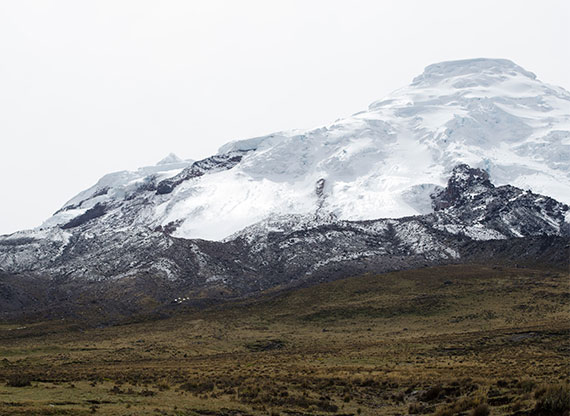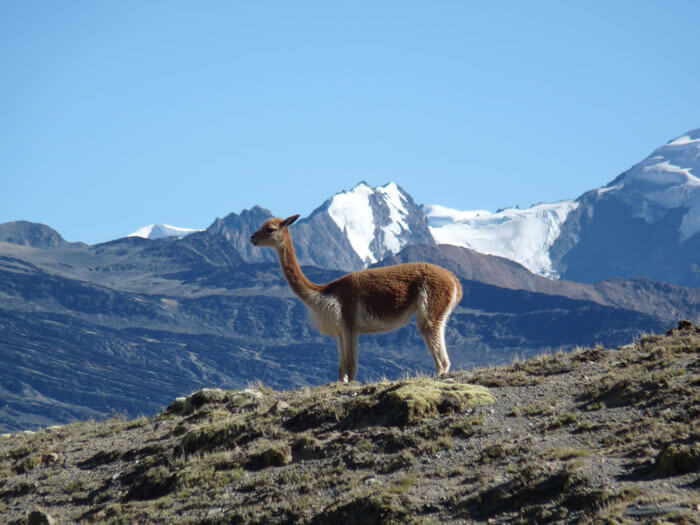Network
History
The GLORIA-Andes Network was established in 2008 in order to assess the impacts of climate change, particularly global warming, on vegetation and floristic diversity of high mountains ecosystems along the Andes through a periodic, comparative and standardized monitoring system. The Network is linked to the global GLORIA initiative, launched in 2002 by the Austrian Academy of Sciences.
Measurement of installation distances in Saltuni with the help of the climber Martín Apaza >


Snowy Antisana, Ecuador
Objectives
- To generate medium and long-term quantitative data on the dynamics of vegetation and habitat characteristics in high Andean ecosystems, including soil temperature records, in order to monitor the impact of climate change on the biodiversity of high Andean ecosystems.
- To promote South-South cooperation of researchers and research centers that conform the GLORIA-Andes Network, as well as facilitating collaborative work among them at a continental scale to promote the sustainability of the monitoring processes developed in each of the GLORIA-Andes sites, and its articulation to regional, national and local initiatives for adaptation and mitigation to climate change.
- To systematize and communicate the results of climate change impacts in high mountain ecosystems of the Andes, through the elaboration of validated protocols, monitoring methods, providing logistical, technical and financial support for data collection and information analysis of the climate / biodiversity relationships in Andean monitoring sites.
GLORIA – Andes in numbers
The GLORIA-Andes network extends over 7000 km, from the Cordillera de Mérida in Venezuela to Patagonia in Argentina, covering an altitude range of 4900 metres, from 600 m above sea level in Tierra del Fuego, Argentina to 5500 m above sea level in Sibinacocha, Peru. Currently, the Network covers 20 sites, monitoring 78 summits, more than 1300 plots of 1 m2, and its members include 44 researchers from 17 institutions. To date, 848 species of vascular plants belonging to 76 botanical families have been registered throughout the Andean region.

Sibinacocha re-measurement of RitiTika summit year 2019, Photo Karina Yager

Vicuna in Apolobamba, Photo Alejandra Domic
Key Achievements
Strengthening and growth of the GLORIA-Andes Network, including the major environmental gradients and ecosystems present along the high Andes (~7000 km distance, ~ 5000 m elevation, ~ 850 species of vascular plants).
Integration and systematization of all information in a digital database, that includes information about vegetation dynamics, metadata of sites, summits and plots, climate records and plant functional traits.
The network has produced 29 publications, including, in addition to thirteen scientific articles, standardised measurement protocols, books, book chapters, popular articles and memoirs.
Incorporation in 2025 of the «Sierras de Uspallata» site, in Argentina.
Incorporation to the network of three new sites during 2019; two in Patagonia, Argentina (Tierra del Fuego and Santa Cruz) and the first GLORIA site in Chile (Reserva Nacional Río Clarillo).